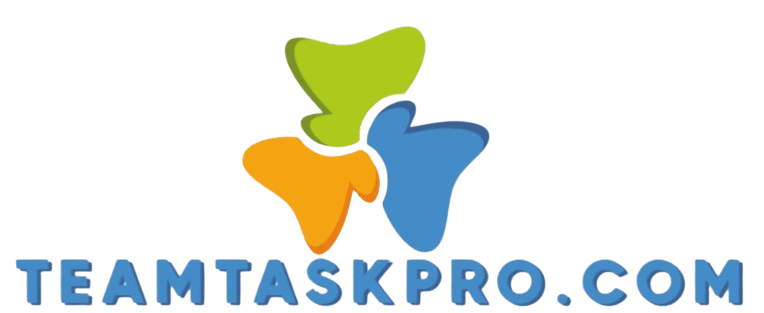how to define project scope?
Defining project scope is a vital step that lays the groundwork for successful project management. By understanding the basics and recognizing their significance, you can align your team’s objectives and deliverables more effectively.
This guide will walk you through key steps for defining project scope, starting with identifying project objectives and creating a detailed plan that breaks down project tasks into smaller parts.
You ll also delve into essential tools and techniques, address common challenges like project changes that get out of control, and discover best practices for effective communication and collaboration.
You ll finish this guide with a powerful framework that keeps your projects on track and ensures they meet their goals.
Contents
- Key Takeaways:
- Understanding Project Scope
- Key Steps in Defining Project Scope
- Tools and Techniques for Defining Project Scope
- Common Challenges in Defining Project Scope
- Best Practices for Defining Project Scope
- Frequently Asked Questions
- What is project scope and why is it important?
- How do you determine the project scope?
- What are some common elements of a project scope statement?
- How can you ensure that the project scope is clearly defined?
- What happens if the project scope changes during the project?
- What are some tools or techniques to help define project scope?
Key Takeaways:

Clearly define project objectives to avoid project changes that get out of control and shifting requirements. Utilize stakeholder analysis and requirement gathering methods to ensure all necessary components are included in scope. Regular communication and continuous monitoring can help manage project scope and adapt to any changes.
Understanding Project Scope
Understanding project scope is absolutely essential; it lays down the boundaries and deliverables of any endeavor. It includes project objectives and the project statement, ensuring that everything aligns with stakeholder expectations and overarching goals.
By clearly defining deliverables and constraints, you can plan resource allocation effectively, manage timelines with precision, and track progress seamlessly. All of these factors are crucial for achieving project success.
This clarity helps to reduce risks and prevent project changes that get out of control, promoting effective collaboration among all stakeholders and ensuring that your project initiatives stay on track and within budget.
Defining the Basics and Importance
Defining the basics of your project scope is essential for establishing clear objectives and deliverables, ultimately paving the way for your project’s success.
A well-defined project scope includes critical elements such as specific tasks, timelines, resource allocation, and stakeholder expectations. By outlining these components, you can effectively mitigate risks and prevent project changes that get out of control.
Take, for example, a software development project. By specifying the required functionalities, you ensure that both your development team and clients have aligned expectations. This clarity not only drives efficiency but also enhances communication within your team, creating an environment where project goals are achieved seamlessly and without misunderstandings.
Key Steps in Defining Project Scope
Defining project scope entails a series of essential steps, including identifying your project objectives, delineating project deliverables, and analyzing project constraints.
This meticulous process is crucial for ensuring the success of your project. Each step plays a vital role in cultivating a comprehensive understanding of project requirements, ultimately establishing a robust foundation for effective planning and execution.
Identifying Project Objectives
Identifying your project objectives is a crucial step in successful project management, as it sets the stage for defining your project goals and aligning them with stakeholder expectations.
This process requires effective communication strategies to engage all relevant stakeholders. By facilitating open discussions, you can gather diverse perspectives, ensuring that everyone s needs and priorities are taken into account.
Utilizing techniques such as stakeholder interviews, surveys, and workshops can significantly aid in pinpointing essential objectives.
Regularly checking for alignment throughout the project lifecycle not only keeps your team focused but also allows for adjustments based on evolving stakeholder feedback. Ultimately, fostering an environment of collaboration and transparency greatly enhances your chances of achieving the desired project outcomes.
Start defining your project scope today with these tips to set your project up for success!
Creating a Work Breakdown Structure

Creating a work breakdown structure (WBS) is essential for visualizing your project deliverables and organizing tasks into manageable components. Breaking a project into smaller tasks clarifies responsibilities. It also ensures all critical aspects are covered.
This approach simplifies project planning! It allows for effective resource allocation, scheduling timelines, and tracking progress. The WBS serves as a shared reference point, enhancing communication with team members and stakeholders.
As a result, it boosts your overall workflow by reducing the chance of overlooking vital tasks. It fosters accountability and drives your project toward successful completion.
Tools and Techniques for Defining Project Scope
Using the right tools and techniques to define project scope is crucial for effective project management. It enhances communication with stakeholders and ensures your project objectives are not just met, but exceeded!
Stakeholder Analysis
Stakeholder analysis helps you understand the expectations and influence of everyone involved in your project, paving the way for success.
This process involves identifying key individuals and groups affected by or interested in your project. You assess their interests and evaluate their level of influence.
By mapping out the roles and concerns of these individuals, you can align project objectives with their diverse needs. This analysis streamlines your communication strategies and helps resolve conflicts, making stakeholder buy-in more attainable.
Start identifying your stakeholders today to ensure a successful project!
Requirement Gathering Methods
Effective requirement gathering methods are vital for capturing the needs and expectations of everyone involved, ensuring your project objectives are clearly defined.
You can use various approaches, including:
- Interviews
- Surveys
- Workshops
Interviews provide in-depth conversations, clarifying specific needs and preferences. Surveys efficiently gather data from a wider audience, offering quantitative insights to shape key project elements. Workshops encourage collaboration, fostering discussions that lead to mutual understanding and consensus.
By combining these techniques, you create a comprehensive analysis that addresses diverse perspectives and lays a solid foundation for your project.
Common Challenges in Defining Project Scope
Defining project scope comes with challenges, including the ever-present risk of scope creep and the complexities of managing project constraints.
If these issues aren t effectively addressed, they can significantly impact your project’s success.
Dealing with Scope Creep

Dealing with scope creep is crucial for keeping your project aligned with its initial objectives. It helps you steer clear of potential pitfalls.
To tackle this challenge effectively, employ strategies that prioritize clear communication and active engagement with stakeholders.
Establishing a well-defined project scope at the outset serves as your foundation. Continuous monitoring ensures that any changes stay within your project constraints time, resources, and budget.
Implementing change management processes allows you to evaluate new requests systematically. This ensures each modification is warranted and doesn t derail your original goals.
Ultimately, understanding how these elements connect creates an environment where your team can proactively manage adjustments, safeguarding the integrity and success of the project.
Managing Changing Requirements
Managing changing requirements can be a major challenge in your project management journey, demanding a blend of adaptability and effective communication with your project stakeholders. This dynamic nature of requirements can greatly influence your project’s risks and planning strategies.
When changes emerge, you need to swiftly assess their impact on timelines, resource allocation, and your overall project goals. Some effective strategies you might consider include:
- Regular stakeholder meetings to gather valuable feedback
- Maintaining a flexible project scope to accommodate shifts
- Using agile methodologies for iterative development
By recognizing the effects of changing requirements early on, you can develop better risk mitigation strategies. This proactive approach not only keeps your projects on track and aligned with stakeholder expectations but also creates a teamwork-friendly environment that encourages new ideas.
Best Practices for Defining Project Scope
By adopting best practices for defining project scope, you can significantly elevate your project planning, communication, and resource management.
This strategic approach ultimately paves the way for more successful project outcomes. Start implementing these strategies today to see immediate benefits!
Communication and Collaboration
Effective communication and collaboration among your project teams and stakeholders are crucial for achieving project success and maintaining clarity in the project scope.
These elements create a shared understanding of objectives, timelines, and deliverables, ensuring that everyone is aligned and working toward the same goals.
To elevate these practices, consider implementing:
- Regular status meetings
- Using collaborative project management tools
- Establishing clear channels for feedback
Creating an inclusive environment where every voice is heard can significantly enhance problem-solving and spur innovation.
Investing in team-building activities strengthens relationships, laying down a foundation of trust that is essential for open dialogue and seamless collaboration throughout the project’s lifecycle.
Continuous Monitoring and Adaptation
Continuous monitoring and adaptation of your project scope are essential practices that ensure effectiveness throughout its lifecycle. By regularly assessing progress against benchmarks, you can identify potential issues before they escalate, allowing for timely interventions.
Using techniques such as Gantt charts (visual timelines that show project tasks over time), Kanban boards (visual management tools for workflow), and agile sprints (short, iterative cycles for development) enables you to visually track tasks and allocate resources efficiently.
Hold regular status meetings. This encourages team members to share insights and challenges. Integrating project management software further enhances your ability to analyze real-time data, offering a comprehensive overview of performance metrics. Ultimately, these practices not only promote alignment with your goals but also cultivate a culture of accountability and responsiveness within your project teams.
Frequently Asked Questions

What is project scope and why is it important?
Project scope refers to the specific goals, deliverables, tasks, and timeline of a project. It is important because it helps to define the boundaries and expectations of the project, and ensures that everyone involved is on the same page.
How do you determine the project scope?
Determining the project scope involves identifying the project objectives, requirements, and constraints. This can be done through communication with stakeholders, conducting research, and analyzing project goals.
What are some common elements of a project scope statement?
A project scope statement typically includes a project description, objectives, deliverables, assumptions, constraints, and a timeline. It may also include a list of stakeholders, project requirements, and a budget.
How can you ensure that the project scope is clearly defined?
To ensure that the project scope is clearly defined, it is important to involve all stakeholders in the scope definition process. This will help to identify any potential misunderstandings or conflicting expectations and clarify them early on.
What happens if the project scope changes during the project?
Changes to the project scope can happen at any time. It s important to communicate these changes to all stakeholders.
Carefully evaluate the impact on the timeline, budget, and overall project goals. Changes should only be made if they are necessary and approved by everyone involved.
What are some tools or techniques to help define project scope?
Common tools for defining project scope include brainstorming sessions and stakeholder interviews. Creating a work breakdown structure, which breaks the project into smaller, manageable parts, and using project management software can also help organize and document the scope clearly.






